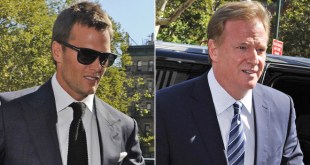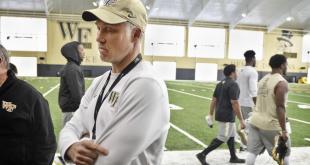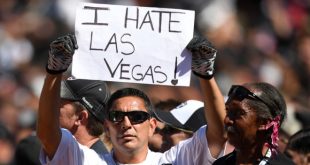Now that the Second Circuit has denied Tom Brady’s petition for rehearing and he has announced his decision to no longer pursue the case, Deflategate is effectively over. Though the NFLPA may still decide to pursue the case to the Supreme Court, it is highly unlikely that the Court would choose to hear the case. With the case effectively over, what lessons can be learned from one of the highest profile sports law cases ever?
The Incident
Deflategate exposed more clearly the problems with many NFL rules. What is their purpose? What are the procedures to enforce them? Are there unanticipated factors that will affect the rule? These issues and others were brought to light when the allegation leaked that the Patriots had deflated footballs below the minimum amount allowed. It quickly became apparent that the NFL did not have fair and consistent procedures to verify ball deflation. Lost in the speculation about the Patriots’ footballs was the fact that the Colts’ footballs also tested below the minimum. And different gauges produced different pressure amounts.
Less clear was what procedures the league had to deal with these problems. According to the NFL and Roger Goodell, football deflation is an issue of integrity for the game, similar to performance enhancing drugs. It is a violation that allegedly goes to the heart of the game – fair play. But for something so integral, the league had no idea what it was doing. Why were only a few of the Colts’ balls tested, not all? Why were the readings on some gauges more relevant than others? Why were the readings on some footballs more relevant than others? Why wasn’t the league testing footballs at halftime of games already? What exactly were the procedures for handling footballs that tested below the minimum? Why didn’t the NFL know that the Ideal Gas Law could account for a decrease in the pressure of the footballs?
The first lesson from Deflategate is that the NFL should commission a review of each of its rules. What is the purpose of the rule? How is the rule implemented? Are there procedures in place to ensure the rule is not violated? If the rule is violated, what actions should the league (or teams) take? Are all parties involved being treated fairly (and when sensible, equally)? Generally speaking, if the NFL can’t answer these questions with clear, specific answers, the rule is not worth having. Either a rule is important and you will have considered its impact and enforcement, or it doesn’t matter very much. Not doing due diligence is tantamount to not caring about the rule.
Every league should consider conducting similar reviews. While time-consuming and undoubtedly costly, such a review process will provide better clarity to players and fans, while offering clear guidance for what league officials should do in crisis situations. Providing clear guidance on procedures and implementation also better assures fans that the league is attempting to be a fair and impartial arbiter, as opposed to one that arbitrarily makes things up as it goes, plays favorites, or caters to public opinion and media pressure.
Though not something particular to Deflategate, the league should also investigate how damaging leaks from the front office occur and consider how to fix the problem. Although there is always the risk that leaks will occur (and it is the media’s job to attempt to report on as much information of public interest as possible), it would behoove the NFL (and other leagues) to attempt to limit media leaks.
First, the league can improve future situations by being more transparent, both with teams themselves and with the public. Announcing what allegations have been made and what the nature and context of the investigation is should better ensure that accurate information is distributed publicly, rather than rumors spread to the press. The league should also look to investigate leaks more thoroughly and enforce stricter punishments on those who are leaking information. There is nothing actually wrong with the act of leaking information to the press. Leaks can often be vital to accountability and transparency. However, combined with a more transparent policy, the league should still attempt to limit leaks.
As we saw with Deflategate, the danger of leaks in disciplinary investigations is the risk that false information will be released to the public, shaping fans’ opinions of the incident before any investigation is even done. False information can be problematic when the public outcry begins to impact the league’s decision-making. Even if public opinion does not shape the league’s actions, the mere perception that it is can often be problematic for the league’s image and appearance of integrity. Moreover, the increased perception of a league office that irresponsibly leaks information leads to a situation in which players are reluctant to release private information to the league as Brady was when asked for his phone. When distrust results from the league’s own actions it’s hard to not to view the league blaming players with a grain of salt.
The Investigation
Though not something one would think needed to be learned, all leagues should commission independent investigations. Leagues often think insularly, and the NFL seems to consider any entity outside of the league office to be “independent.” Not only is this not the case, but leagues should attempt to not only commission independent investigations, but investigations which avoid as much appearance of impropriety as possible. The NFL’s typical outside counsel (that represents it against the NFLPA in legal disputes) should not be considered an “independent” firm. Nor should firms from which the NFL hired its in-house counsel. Nor should firms at which recent NFL commissioners previously worked or currently work.
None of this is to impugn the integrity of the lawyers or other employees working at these firms. But the league should attempt to avoid the appearance of impropriety. When the public views investigators as potentially biased, it undermines public confidence in the league and defeats the entire purpose of seeking an independent investigation. And as we saw in Deflategate, the league can get caught in the untenable situation of arguing that an investigation is independent, while maintaining that the investigative notes are privileged attorney work product. If anything, the league should desire more independent investigations because if the investigators have no relationship to the league, it will inspire more confidence in the investigation’s conclusions, prevent the NFLPA from arguing that the investigation is not truly independent, and bolster public opinion of the league’s integrity.
The league should also empower investigators, not hamper them. When the league investigated Ray Rice, it apparently could not get video footage from inside the elevator where Rice punched his fiancée, but somehow TMZ was able to obtain the footage. There’s no reason why the league, with its contacts, resources, and influence, should be unable to convince a hotel to release security footage to it for an investigation, especially when it already had partial footage.
Those who do conduct investigations for the league should keep track of investigative roles and contributions within the investigation. One issue in dispute in Deflategate was how much NFL counsel Jeff Pash contributed to the Wells Report and what the nature of his contributions were. Despite the league’s announcement that Pash would be the co-lead investigator with Wells, Wells insisted that Pash had a minimal role, though he admitted to not knowing exactly what Pash did as part of the investigation. Allowing the league, the players association, and the public to know what the investigators’ roles were aids transparency and prevents the type of procedural fairness arguments that the NFLPA used in Deflategate. This in turn allows the NFLPA, and the public, to have greater confidence in the value and integrity of the investigation. And if no NFL officials (or anyone with a connection to the NFL) are involved with the investigation, then the role of the investigators matters even less.
The Lawsuit and Appeal
Prior to the hiring of Paul Clement, the NFL’s legal team made a number of small missteps throughout the lawsuit. None of these mistakes by themselves hurt the league, but it raised questions about their legal team’s preparation. The NFLPA experienced similar issues on appeal. After losing before Judge Berman, the NFL brought on one of the top appellate lawyers in the country in Clement, and the NFLPA stuck by Kessler who won the arguments before Judge Berman. But Kessler seemed flustered at oral arguments and frustrated by the judges’ questions, while Clement handled the hearing with ease. After losing the appeal at the Second Circuit, the NFLPA brought on top appellate attorney Ted Olson to handle the final parts of the appeal process.
At various points, both the NFL and NFLPA had the opportunity to bring on better counsel that could have helped their legal strategy and chance of success, but chose not to. One lesson from this is that if it’s really an important case for you to win, bring on the best counsel you can get. That’s not to say that Clement’s presence would have resulted in a Berman decision for the NFL or that Olson’s presence would have produced an appellate victory for the NFLPA, but why wait to bring in the big guns when you have the resources to do so and it could help your chances?
Another problem with the appeal was that it became clear that the judges involved were completely unfamiliar with the NFL, how its CBA works, and the facts of the case. This is one of the reasons why parties agree to arbitration in the first place, to allow cases to be heard by more experienced arbitrators who may be more familiar with the issues and have more time to review the facts. This is not a new lesson for the NFLPA. It sought to renegotiate the commissioner’s power in the last CBA and failed. But the NFLPA was riding a winning streak of getting discipline overturned or reduced – Bountygate, Adrian Peterson, Ray Rice, Greg Hardy, and even the district court level in Deflategate. So perhaps the union thought it could keep using arbitration and the courts to reverse its failure in CBA negotations. In this case they were wrong.
At the same time, Deflategate probably does not discourage the NFLPA from continuing to litigate commissioner discipline. Even though the Second Circuit has final say, two of the four federal judges who ruled in the case sided with Brady. And this is just one decision, at the end of a string of union victories. But even so, the NFLPA will have to seriously consider how hard it wants to push for disciplinary reforms next time CBA negotiations come around. On the other side of the table, the NFL should consider whether some concessions to the NFLPA might just help it avoid PR nightmares and protracted court battles. Even making some of the adjustments described above (without any CBA concessions) would help the NFL’s legal position.
Conclusion
It seems like everyone has something to learn from the missteps throughout this eighteen month case. From a sports law perspective it has been fascinating to see the intense public interest not only in the outcome itself, but in the legal process of arbitration, litigation, and appeal. More NFL fans now have insight into how arbitral deference works and understand terms like “en banc.” This is part of a greater trend of interest in off-the-field aspects of sports, whether it’s contract terms, player discipline, or concussion protocols. No matter what happens between the NFL and NFLPA in the future, NFL fans will continue to be interested in how the law affects their teams and to learn the legal lessons that the league and union should have known already.
 The Sports Esquires Putting Sports on Trial
The Sports Esquires Putting Sports on Trial






None of this service to repair the unfair damage done to Tom Brady’s reputation
The first time ever that the nfl measured footballs during a game they were completely unprepared to understand the data they saw, immediately jumped to a conclusion and went from there. At the time, the nfl clearly thought that if the football measured 12.5 in the warm locker room it should measure the same on the cold field. They had no idea that footballs measuring below 12.5 were normal and jumped to the guilty conclusion with the first ball they saw that measured below 12.5. The appalling amount of deceit and fraud that has been identified in the Wells report makes it clear that Wells was assigned the task of showing guilt regardless of what the data indicated (and failed).